You Know the Best Part About Being Half Black and Half White
Black people don't have freckles."
Those were the words that reverberated through Samantha Ferguson'due south center schoolhouse–aged head after telling a boy at school that she was half-black and half-white. Classmates, confused past her advent, had been hounding her with questions like, "Whatare y'all?"
"It actually upset me. I'chiliad a human being," recalls Ferguson, at present 24, a third-grade teacher in Glen Burnie, Maryland. "I wanted to ask them, 'What areyou?'"
Before middle school, Ferguson didn't recollect she was different from other children. But, she says, the students at her predominately-white school, "dressed a certain style, looked a certain way, their hair was direct. My peel is not nighttime, just it'south a different tone, which fabricated me stand out."
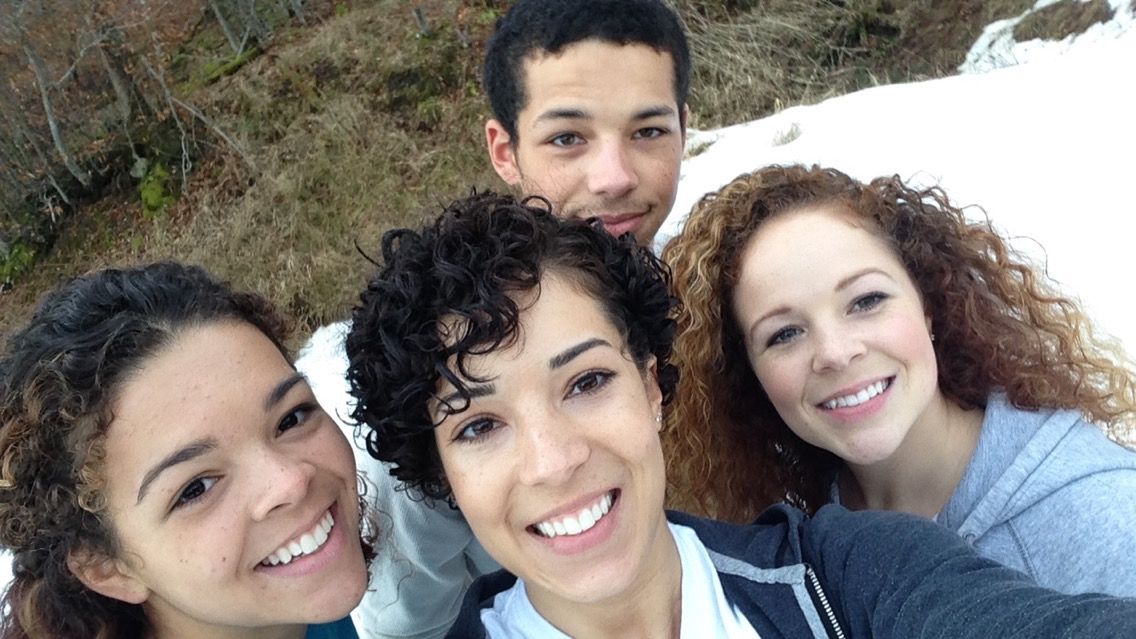
(Image credit: Courtesy of Samantha Ferguson)
Like all heart-schoolers Ferguson had crushes and wanted to be popular. "I could never be popular, though, considering I didn't look like everyone else. Boys didn't accept crushes on me because my hair was frizzy and I had freckles."
It was the beginning fourth dimension she realized that people are different colors—and receive dissimilar treatment because of that. "I didn't know if I should tell my classmates I'm white, or if I should tell them that I'g black." She didn't know where she fit in. She didn't know how to identify herself.
"Identity is understanding who we are in the globe," says Kerry Ann Rockquemore, co-author ofBeyond Blackness: Biracial Identity in America. "Part of that is how others empathize us, and the other office is how we understand ourselves."
For many biracial people, that understanding tin can be both elusive and capricious. From checking boxes on forms to fulfilling quotas, race is used to define and control and so many aspects of everyday life. And biracial people are constantly faced with a choice.
It was the get-go time she realized that people are different colors—and receive different treatment because of that.
Biracial women who struggle with their own identity may feel an overwhelming exterior force per unit area for racial clarity. "People like a for-certain answer," says Ferguson. "People similar math because if yous solve a trouble, you have an answer, and that'due south just the answer. I can't merely choose. It's like request,what one-half of yourself do you lot like meliorate?"
"I don't know if I have a physical way to depict my ethnicity," says Sarah Heikkinen, 23, a announcer from Cortland, NY. "I don't know if I place with existence black or white, one more than the other. It'due south hazy how a mixed person is supposed to ascertain themselves; people are e'er defining it for them."
Near two-thirds of people with a mixed-race background practice non identify equally multi- or biracial, according to a Pew Research Center study of Americans with at least two races in their background. At that place are a diverseness of factors—pare tone, pilus color, eye color, where and how a person was raised—that may influence how a person of dual heritage classifies herself. In the Pew study, 47 percent of multiracial people who do not identify equally such say it's because they look and are perceived every bit a one race.

(Paradigm credit: Courtesy of Sarah Heikkinen)
Heikkinen, whose female parent is black and begetter is white, looks white: She has blonde hair, greenish eyes, freckles, and stake peel. Although her physical appearance doesn't fit the expectation of "black" in America, she says she identifies with both races equally.
Growing up, Heikkinen struggled with hating the white part of herself. It's the part of her that everybody sees—something she often resents considering of the automatic assumptions people make. As a child she wished she had darker skin so she could encounter the same experiences as her mother, brother, and sister, who are all a few shades darker. She noticed the stares of other people whenever she was with her mom and siblings, as if she didn't belong. Kids would ask, "Is that really your mom? Are you lot actually black?"
"Is that really your mom? Are you actually black?"
Ferguson has fair skin, chocolate-brown eyes, and night curly hair, simply her older sister, Ashley Ferguson, is more white-presenting with pale pare, light-green eyes, and blood-red hair. Ashley, like Heikkinen, sometimes felt alienated from her family because of her concrete advent. "My sister used to call me the white babe," Ashley says. "They would joke that I was adopted because I didn't look similar the residuum of my siblings."
"Nosotros have an expectation in society of what a black person should look like, or what a white person should await similar," says Sarah Gaither, Ph.D., an assistant professor of psychology and neuroscience at Duke Academy. "And if you don't expect similar that, that'southward disruptful."
Gaither, who is biracial, says she'southward treated like a "political party game:" "'Gauge what race she is. I bet you'll never guess,' they say. I don't match anyone'southward expectations."
I want to be fair to who I am, simply it'due south hard when society wants y'all to option one," says Kayla Boyd, 23, fashion and lifestyle blogger based in the Bronx, N.Y. For many identification factors (heart color, weight, country of origin) at that place tin be only ane correct answer. Only race is an exception to the rule—and non all forms accept a "cheque all that apply" selection. It wasn't until 2000 that the U.S. Census fifty-fifty allowed multiple selections for race.
"The large problem is that every bit a lodge, nosotros call up in either-or categories," says Gaither. "You can merely exist i thing or some other. You can't be two things at the same time."
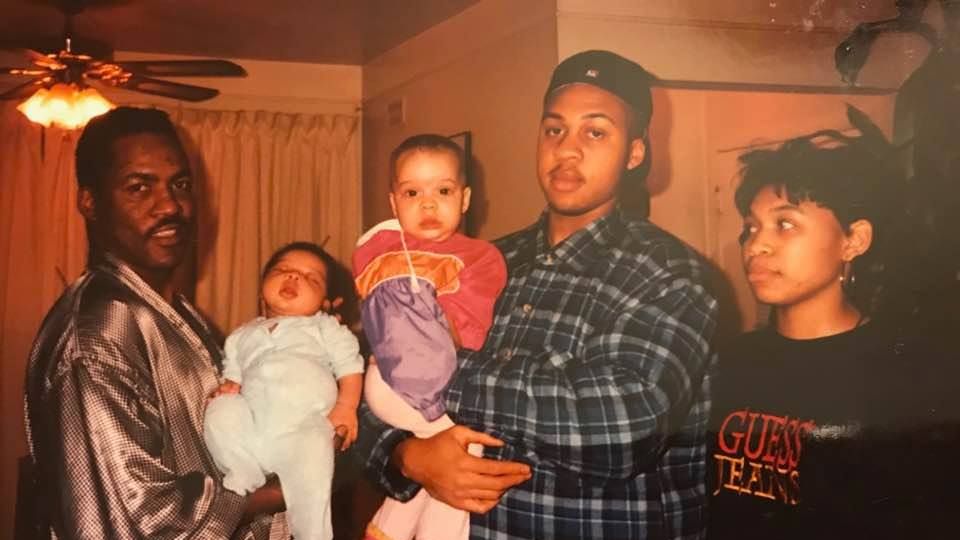
(Paradigm credit: Courtesy of Kayla Boyd)
"Being able to pass equally a lot of different races means other people don't know how to categorize me, only it's also fabricated me second-guess how to categorize myself," says Boyd.
Combining black and white ancestry is about much more how that DNA affects your skin tone or pilus texture. The fraught history between the two races tin nowadays myriad struggles mentally and emotionally for those grappling with being a blend of both. It becomes intensely personal in a way that'south different from Americans of a single race. At first, Samantha and Ashley Ferguson's maternal slap-up-grandparents—who are from southern Mississippi—didn't accept that their mother was with an African-American man. Information technology wasn't until Ashley was built-in, and appeared to be white, that they were "okay" with her parent's relationship.
Heikkinen recognizes the privilege that comes with looking white: "A cop isn't going to call up I'thou a threat."
Sarah Sneed, 31, a guidance advisor from Newark, Delaware, thinks that—multiple boxes on government forms or non—at that place'due south and then much animosity betwixt whites and blacks that choosing both is not an option anymore; it's ane or the other.
Lately, checking social media—and seeing the posts proclaiming white supremacy or analytical #BlackLivesMatter—has made Sneed more than ashamed of her white side. "If I choose to be white, then I'm spitting on the history of my other side," she says. "How cartel I practise that? And choosing to be black is like maxim, 'All white people are shameful,' just I know that'due south not the case either."
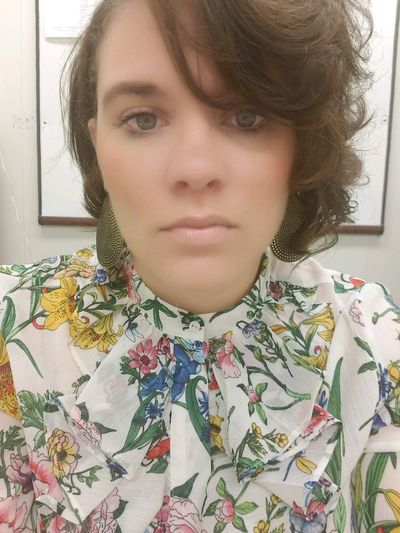
(Image credit: Courtesy of Sarah Sneed)
All the shootings, marches, and riots accept caused Samantha Ferguson to realize that we haven't come as far as a country every bit people would similar to think. "I don't feel more than injure or pain for one group," says Ferguson. "I'm not saying that everything that happens that's racially unjust is white people's fault or blackness people'southward fault. It'due south the decisions that both groups make; the morals and ideas that have been passed downwards for generations."
Sneed identifies more as a black woman because she says she'south more comfortable in her blackness than her whiteness, but that has presented its ain set up of challenges. "Because I wait white, people think that I can't understand what it'south like to be black, then I go embarrassed," she says. "I read comments virtually beingness a potent black woman, and I'm like,I tin't be a strong black adult female, because I've never had to be, considering I don't look black." Simply the experience of beingness a "Becky" or a white daughter isn't something authentic to Sneed either.
She was raised past her white mother, only lived in an surface area with a larger black population. The way she talked was less "proper," Sneed says, and the things that interested her were ones that resonated with the blackness community: She listened to R&B; and hip-hop. Sneed never felt comfortable, she says, with things she attributed as white, like having direct hair or loving country music. On the inside, she felt black, just on the outside, she looked white. That dissonance led to difficulty existence accepted by her peers, and she wrestled internally over her identity.
A big part of the biracial experience is being treated—or non—similar a blackness person in order.
Sneed worked hard to testify that she was black, using beauty products made for blackness women and going to a black beauty salon, only that, likewise, made her experience aback.
Equally humans, we take a built-in trend to want to belong to groups, says Gaither. We are in search of family and friends because we're social beings by nature. "For biracial people who are struggling with whether they're white or blackness enough to fit in, that'due south an added toll," she says.
Typically for people who are half-white and half-blackness, a big part of their experience is being treated—or not—like a black person in order, says Gaither. "If you don't have those features or skin tone that can lead to the tension and prejudice that a lot of members of the blackness customs face, and then in that location'southward this awkwardness that mixed people face in claiming a blackness identity," she continues.
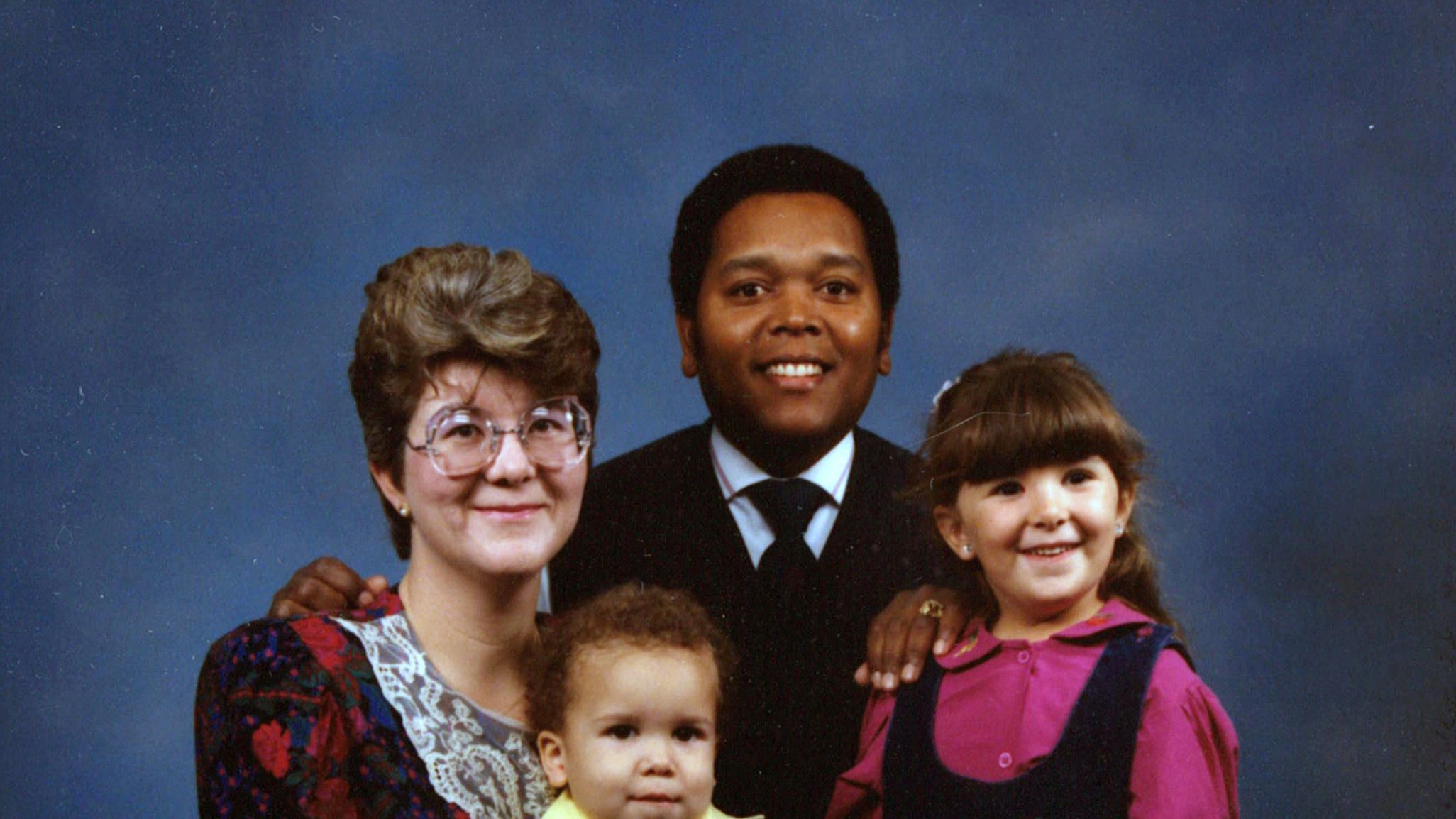
(Image credit: Courtesy of Sarah Gaither)
"If y'all phenotypically wait black, you lot don't have the choice of proverb you're white considering you have a white parent," adds Rockequemore, who, while biracial, identifies as African-American. "If you look white, you lot can identify in a total range of means. You look ambiguous, so yous take more choices of identity."
Like Sneed, Heikkinen has spent about of her life having to prove her blackness to those who questioned it. It became common practice for her to show a picture of her and her female parent to those who needed verfication. Gaither too carries around a family unit photograph in her wallet every bit "proof" that she has a blackness begetter. And while constantly having to justify an identity is frustrating, Heikkinen recognizes the privilege that comes with looking white. "I walk into a store and people aren't going to follow me around," she says. "A cop isn't going to pull me over and question me or call back I'g a threat. Information technology's a privilege of blending in, of invisibility, in a fashion, because people simply don't find you."
Ashley Ferguson believes that people need so much from mixed-race people because they are trying to make themselves experience more than comfortable. "It's terrifying for people when they tin can't put a finger on yous because you're strange to them," she says. Depending on how someone is raised, they might need to put a person in a box in order to understand their version of that person, posits her sister, Samantha.
"I remember putting me in a box is not the bad part," she continues. "The bad part is putting me in a box with stereotypes. Not saying 'you're white,' but 'y'all're white, so you sound proper and professional person when you talk,' and 'y'all're black, so you sound uneducated and loud.' I think that'due south the bad role—the other things in the box."
"I can't be a strong black woman, because I've never had to exist, considering I don't wait black."
Samantha Ferguson, who graduated from Bowie Country University, a historically blackness higher, recalls being treated differently at that school because of her white features.
"Being a petite, white-presenting, female person, when you go into the financial assist office to ask them for something, they don't take you seriously" says Ferguson. "They just push you forth, but you lot will not treat me differently. That's non off-white."
Uncomfortable moments on campus didn't end with the administration. Her fellow co-eds as well judged her based on her perceived race. "I was dating black guys," Ferguson recalls. "And there were a lot of girls who didn't similar me doing that because they didn't run across me equally black." She points out that the women who were rude to her weren't really interested in those men themselves. "They weren't jealous, they just wanted to be hateful."
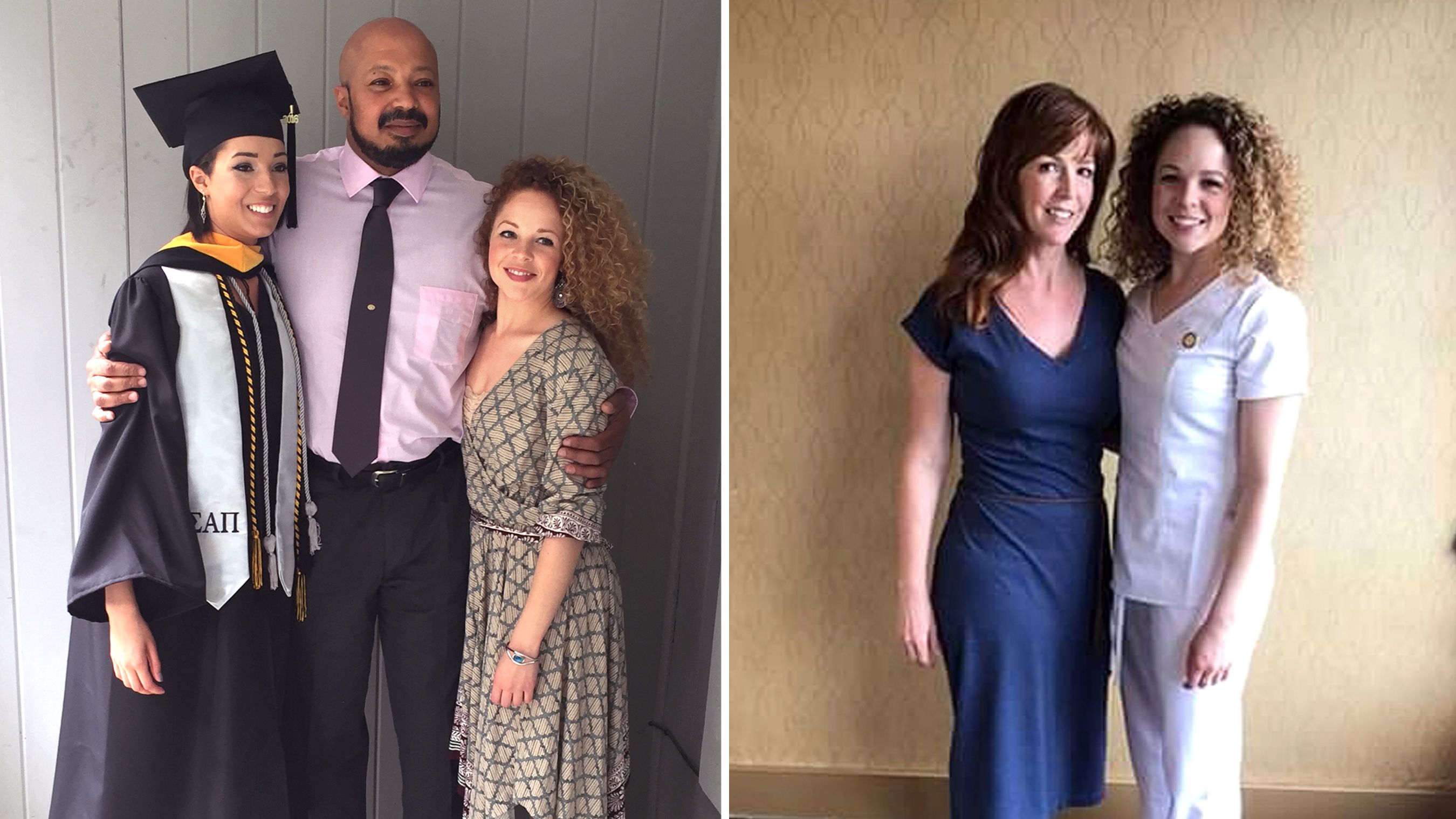
(Image credit: Courtesy of Samantha and Ashley Ferguson)
Many people accept opinions about how y'all should act, where you belong, and how you should categorize yourself when you're biracial. But sometimes you simply can't.
"You lot don't know where y'all vest," says Sneed. "I experience like I'chiliad simply floating. I am black. I am white. Being caught in the eye…you feel like you lot're being pulled…it makes you uncomfortable all the time."
Biracial people aren't either-or, even if they place as i race over the other. You can't put them in a box or "solve" this problem. Asks Boyd: "I don't want people to put me in a box, but it's similar,how do I break complimentary?"
balketheryinithou.blogspot.com
Source: https://www.marieclaire.com/culture/a15941992/biracial-in-america/
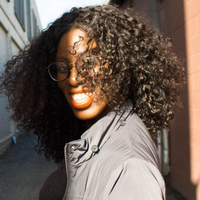
Post a Comment for "You Know the Best Part About Being Half Black and Half White"